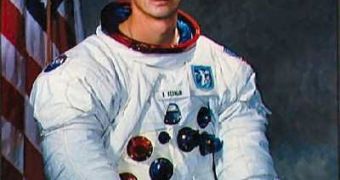After 40 years from the last manned moon mission, Apollo 17 commander Eugene Cornan reveals he left his camera on the moon's surface in order to see whether someone will go there and take it.
Part of an experiment into solar cosmic radiation, Eugene Cernan's camera keeps lying where he left it four decades ago, The Telegraph reports.
“I left my Hasselblad camera there with the lens pointing up at the zenith, the idea being someday someone would come back and find out how much deterioration solar cosmic radiation had on the glass,” Cornan declared in a statement made on the occasion of Apollo 17's 40th anniversary.
40 years ago, the last man to have walked on the moon was sure his mission was just the beginning of a series of great moon adventures.
However, now with NASA's significant budget reduction preventing other moon projects from being accomplished, he regrets having left his camera wait for an illusion.
“So, going up the ladder, I never took a photo of my last footstep. How dumb!” Cernan said on a nostalgic note.
“Wouldn’t it have been better to take the camera with me, get the shot, take the film pack off and then (for weight restrictions) throw the camera away?”
Apollo 17 was the sixth and last mission to have landed humans on the moon. Launched on December 7, 1972 as part of the United States' Apollo project, Apollo 17 broke various records set by previous flights, turning into one of the world's greatest space achievements.
Many scientists believe that the moon is no longer the main target of the manned missions, suggesting that Mars is what we should aim for in the future. However, some experts, Eugene Cernan included, think we could not conquer Mars unless we've conquered the moon before.
“I do think we need to go to the moon first to set up a base so we can use more advanced propulsion techniques,” Cernan said.
“For Mars we need propulsion technologies to get us there in say, 60 days, then spend whatever length of time we want to spend – two months, six months – and return when we want to come home. That will require ion and nuclear propulsion and help from a base on the moon.”

 14 DAY TRIAL //
14 DAY TRIAL //